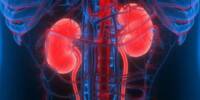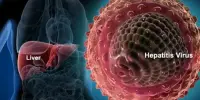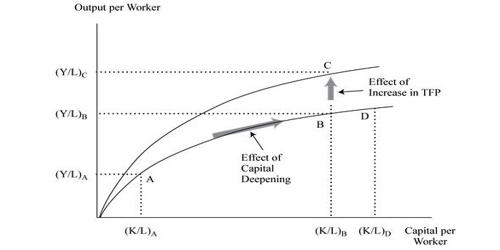Researchers have created a blood test that may accurately detect neuroendocrine prostate cancer and distinguish it from castration-resistant prostate cancer-adenocarcinoma (CRPC-adeno).
Cancer cells, like a criminal entering a witness protection program, can lose their previous identities and assume a new one. Detecting such an identity transfer is especially difficult when metastatic castration-resistant prostate cancer (CRPC) progresses from adenocarcinoma to neuroendocrine prostate cancer (NEPC), which is extremely difficult to treat.
Researchers at Dana-Farber Cancer Institute and the University of Trento in Italy have devised a blood test, described in Cancer Discovery, that may accurately detect NEPC and distinguish it from CRPC-adenocarcinoma.
NEPC is now diagnosed by taking a biopsy of tumor tissue from a metastatic tumor location. However, it is not always evident to clinicians when to perform a biopsy. Furthermore, biopsies may be inaccurate due to the heterogeneity of metastatic cancers.
As prostate cancer treatments get more effective, we expect the emergence of different types of treatment resistance like neuroendocrine prostate cancer that help them evade treatment.
Himisha Beltran
“As prostate cancer treatments get more effective, we expect the emergence of different types of treatment resistance like neuroendocrine prostate cancer that help them evade treatment,” says co-lead author Himisha Beltran, MD, associate professor of medicine, Lank Center for Genitourinary Oncology and the Division of Molecular and Cellular Oncology, Dana-Farber Cancer Institute. “We hope this blood test can be used by clinicians to determine if a patient is developing neuroendocrine prostate cancer.”
About 10-15% of people with metastatic prostate cancer develop NEPC. The transition entails a shift from cancer cells that rely on androgens to cancer cells that no longer recognize androgens.
“They can stop expressing the androgen receptor,” Beltran explains. “They shut down their hormone-driven identity and they turn on a new identity as a way to develop resistance to treatment.”
In prior research, the multinational team examined tissue samples from biopsies to determine the genetic and epigenetic changes associated with this transformation. They discovered that across the entire genome, distinct epigenetic modifications, such as DNA methylation changes that turn genes on or off, separate CRPC-adeno from NEPC.

These epigenetic changes can be detected in blood because the body is constantly shedding fragments of dead cells into the bloodstream. Those cells come from all over the body, including from tumors. The fragments include bits of DNA, called cell-free DNA (cfDNA), along with whatever epigenetic tags and structures were attached to them when the cell died.
Beltran collaborated with a computational team at the University of Trento, led by Francesca Demichelis, PhD, co-lead author on the study, to create a blood panel test, called NEMO (NEuroendocrine MOnitoring panel). “The test selectively probes cfDNA in blood plasma for relevant DNA fragments and measures their methylation,” says Demichelis. “Because the number of methylated regions needed to distinguish between normal, CRPC-adeno, and NEPC cells is small, the panel of genes sequenced by the test is minimal and efficient.”
NEMO reports two measures: the tumor fraction, a measure of disease burden based on the ratio of tumor DNA to normal DNA in the blood; and the tumor type, either CRPC-adeno or NEPC. The tumor type is reported as a score on a continuum because a patient’s cancer might be a mix of the two.
“It not only picks up the neuroendocrine phenotype but also can pick up subtypes in the middle, as tumors transition from one subtype to the other,” says Beltran.
Beltran’s team examined NEMO in many preclinical models of prostate cancer as well as blood samples from multiple patient cohorts with known prostate cancer subtypes. The NEMO tumor type score detected subtypes with good accuracy.
The scientists also tested NEMO in two clinical studies including individuals with aggressive CRPC. The panel’s estimate of tumor fraction was consistent with other acknowledged measures of disease burden, implying that the test might be used to track treatment response by determining whether or not a tumor is diminishing. This is especially important since disease burden measurements, such as prostate-specific antigen levels, become unreliable when a tumor changes its identity to NEPC.
NEMO successfully identified patients with NEPC in two clinical trials using pathology data. It also detected patients who had not been diagnosed with NEPC but showed evidence of a transition to NEPC on their pathology reports.
“Now that we have robustly shown the accuracy of this panel test, we’re excited to apply it to clinical questions,” Beltran said. “We’d like to determine if this test can help us predict which patients respond to certain prostate cancer treatments, including precise treatments that target neuroendocrine prostate cancer.”
A NEMO panel’s information may potentially assist clinicians choose targeted treatments for patients or investigators learn more about the condition.
Further, adds Beltran, the test’s approach could potentially be applied to other forms of cancer to distinguish subtypes.
















